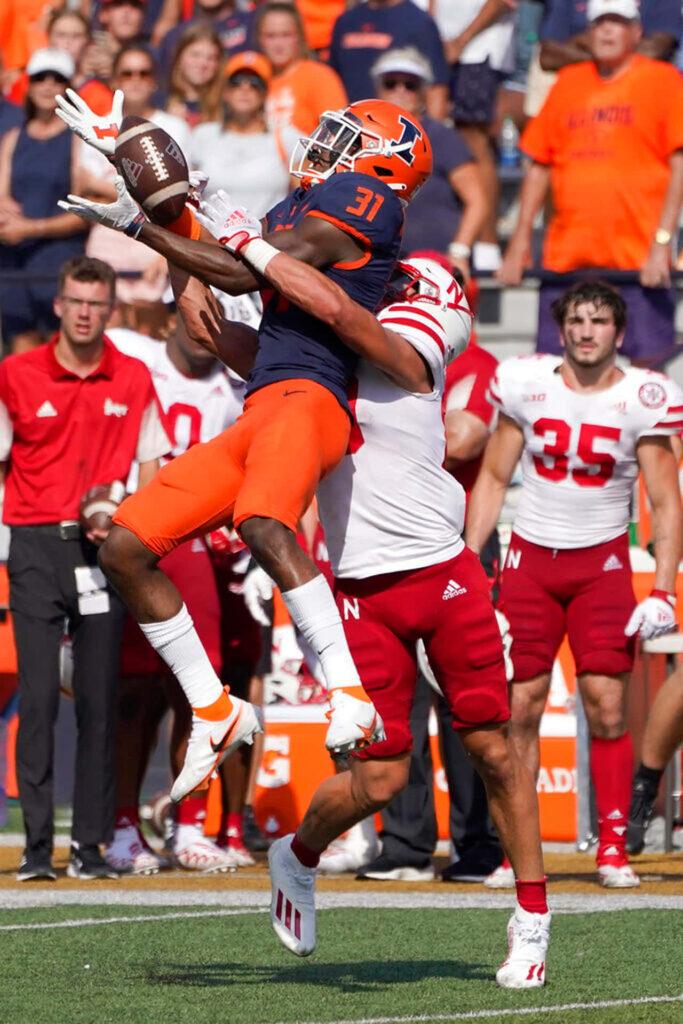
A football player attempts to catch a pass amidst defensive pressure during a game. The action captures the excitement of college football.
The NIL Revolution: A New Economic Playing Field
The introduction of Name, Image, and Likeness (NIL) deals has created the most significant economic shift in college football history. Top players like Texas quarterback Arch Manning entered the 2024 season with NIL projections of $6.8 million according to On3, though his value has since dropped to $3.6 million due to inconsistent performance. This new reality has created economic barriers that function like tariffs—programs without substantial NIL budgets find themselves priced out of premium talent markets.
The economic divide is stark. Programs with limited resources increasingly focus on high school recruits, particularly four-star prospects ranked outside the top 30, as 247Sports reports these players are “typically more cost-effective” in the NIL era. This economic stratification mirrors how trade tariffs protect domestic industries by making foreign alternatives more expensive.
Compliance Costs: The Administrative Tax
NCAA compliance represents another form of economic barrier on college football programs. Recent violations at Michigan State illustrate the true cost of these obstacles. The program faced three years of probation and must pay $30,000 plus 1.5% of the football program’s budget for recruiting violations that occurred between 2021 and 2023.
The specific violations involved approximately $10,764 in impermissible recruiting inducements provided to six prospects during unofficial visits. While these amounts seem modest compared to today’s NIL deals, the compliance infrastructure required to avoid such violations represents a significant ongoing cost that smaller programs struggle to maintain.
International Talent: Immigration as Economic Barrier
College football’s relationship with international talent faces unique challenges that mirror traditional trade barriers. While not as prevalent in football as in other sports, international students contribute approximately $50 billion annually to the U.S. education system according to the Institute of International Education.
Recent policy changes have created visa-related barriers that particularly affect foreign student-athletes. New foreign college student enrollment dropped 17% this fall following policy changes that made student visas more difficult to obtain. For college football programs seeking to diversify their talent pools, these immigration barriers function like protective tariffs, limiting access to international players who might otherwise contribute to program success.
Resource Allocation: The Arms Race Economics
Maryland’s recent commitment to retain head coach Mike Locksley illustrates how economic pressures force programs to choose between protecting existing assets or expanding recruitment capabilities. Athletic director Jim Smith announced that the program’s NIL resources will “significantly” increase next year, acknowledging the economic reality that competitive recruiting requires substantial financial investment.
This arms race mentality creates economic inefficiencies similar to those caused by trade wars—programs spend increasingly large amounts on recruiting and retention, driving up costs across the entire system without necessarily improving the quality of competition or educational outcomes.
The Geography of Economic Advantage
Unlike traditional businesses that can relocate to avoid tariffs, college football programs are geographically fixed, creating regional economic advantages and disadvantages. Programs in wealthy donor regions or states with favorable tax structures can more effectively navigate the new economic landscape, while those in economically disadvantaged areas face barriers that limit their competitiveness.
Air Force Academy represents an extreme example of how institutional constraints function as economic barriers. As coach Troy Calhoun noted, “This place is unlike any other in the country” when discussing recruiting challenges unique to military academies. The academy’s service requirements effectively create a tariff-like barrier that limits their ability to compete for certain types of talent.
Breaking Down the Barriers
The solution to college football’s economic tariff system requires both systemic reform and creative adaptation. Programs are beginning to recognize that success in this new environment demands efficient resource allocation rather than simply throwing money at problems. Some institutions are investing in infrastructure and development programs that create long-term competitive advantages rather than engaging in costly bidding wars for individual players.
The economic lessons from college football’s current transformation mirror broader debates about free trade versus protectionism. Just as economists generally argue that reducing trade barriers increases overall prosperity, college football might benefit from reforms that lower economic barriers to competition while maintaining appropriate oversight and compliance standards.
As the sport continues evolving, programs that learn to navigate these economic realities most effectively—whether by building sustainable NIL programs, investing in compliance infrastructure, or developing alternative talent pipelines—will gain lasting competitive advantages. The invisible tariffs of college football may be here to stay, but understanding their impact is the first step toward building more equitable and competitive programs for the future.

